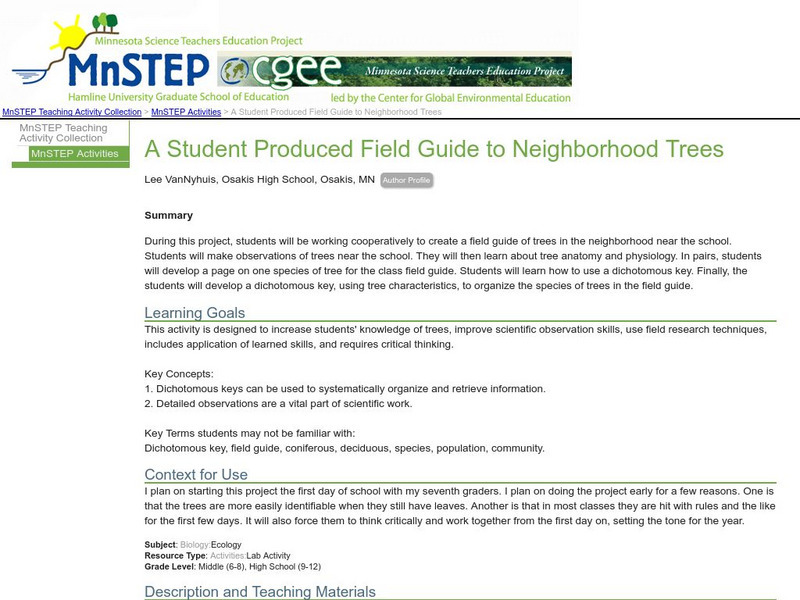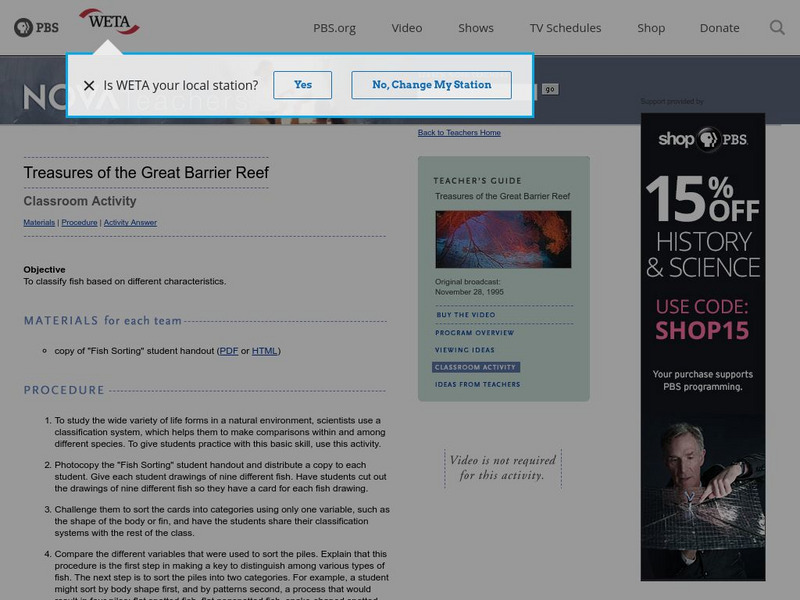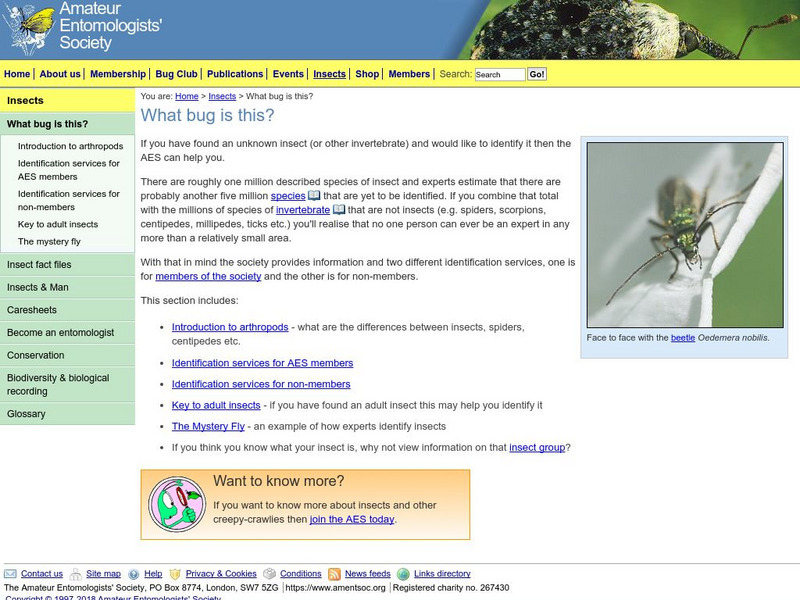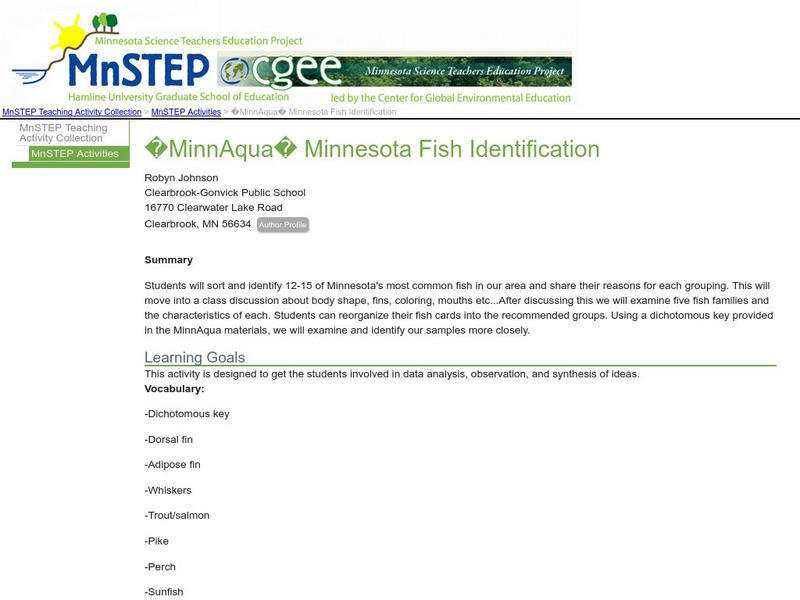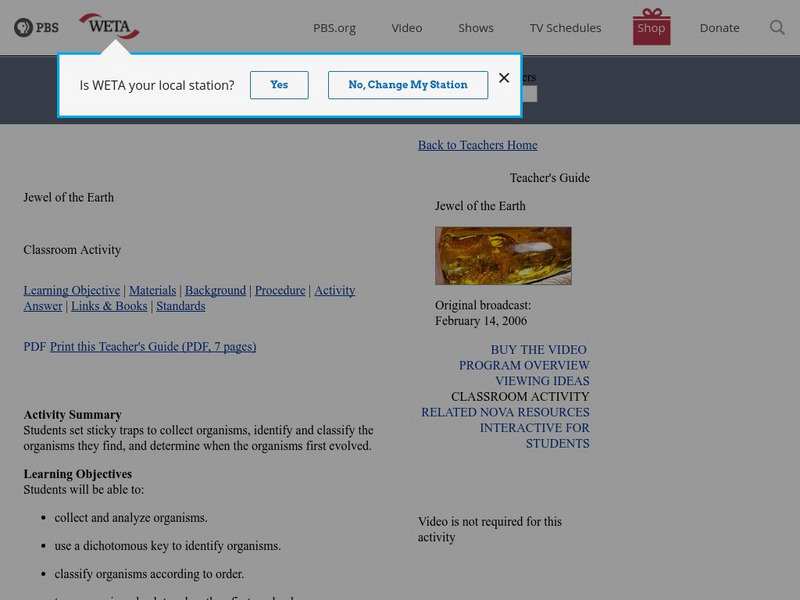Curated OER
Bean Sort
Students define and discuss dichotomous keys. They create a dichotomous key to identify a bag of mixed beans, and assign their group of beans a genus and species name.
Other
Science4 Us: Materials
Students use a dichotomous key to sort materials into natural and man-made and sort further using the adjectives rough and smooth; this activity builds both science and language skills as students classify materials and build deeper...
Other
Alice Ferguson Foundation: Bridging the Watershed: Plant Identification
Use this interactive guide to identify plants based on their leaves. For each step, you are given two choices, and you continue down the branches until you discover a plant's name.
Texas Education Agency
Texas Gateway: Dichotomous Key
This tutorial is introduces students to the usage of the dichotomous key.
Biology Corner
The Biology Corner: Dichotomous Key
Here's a great dichotomous key for beginners. Use gremlin-like creatures to learn how to use more taxonomic keys.
Science Education Resource Center at Carleton College
Serc: A Student Produced Field Guide to Neighborhood Trees
During this project, students will be working cooperatively to create a field guide of trees in the neighborhood near the school. Students will make observations of trees near the school. They will then learn about tree anatomy and...
Science Education Resource Center at Carleton College
Serc: Identifying Macroinvertebrates to Determine Health of Aquatic Ecosystem
In this hands on activity students will learn how to identify basic macroinvertebrate using a dichotomous key. They will complete a chart used by the MPCA and we will discuss why an ecosystem may not be healthy or not.
PBS
Nova Teachers: Treasures of the Great Barrier Reef: Classroom Activity
This activity involves having students classify nine fish according to various physical characteristics. They can also develop a key to identify the fish.
Other
Aes: Bug Identification
This interactive resource can be used to identify the order of an insect.
Other
Siemens Science Day: Life Science: The Key to It All
In this hands-on science activity, learners will create their own unique creatures as well as dichotomous keys so that classmates can identify the creature.
Enchanted Learning
Enchanted Learning: Plants
Enchanted Learning provides information an illustrated plant dictionary as well as printouts, flower anatomy, and plant-related crafts.
Environmental Education for Kids
Eek!: Water Critter Key Life in a Pond
Use this interactive key to identify a critter that you found in the water. Expand it to full-screen for the best experience.
Oregon State University
Oregon State University: Dichotomous Key
An excellent starting point. Get a good description of what the dichotomous key for tree identification is and then directions for using it to identify trees.
Science Education Resource Center at Carleton College
Serc: Mn Step: Minn Aqua Minnesota Fish Identification
Describes a lesson in which students sort fish cards into groups based on the characteristics of the fish. The MinnAqua resources referred to can now be found at...
SRI International
Performance Assessment Links in Science: Identifying Creatures
Students use a 10 step dichotomous key to identify three mythical animals of their choice. The pictures of the animals and the key are both provided.
PBS
Pbs Teachers: Jewel of the Earth
Collect and analyze organisms and use a dichotomous key to identify and classify the organisms. Research the evolutionary history of organisms.
Other
Villanova University: Constructing a Dichotomous Key
This exercise provides information on how to construct a dichotomous key using geometrical shapes. Another exercise shows how a key can be constructed based on traits in a classroom group.
Other
Amateur Entomologists' Society: Bug Identification
This resource allows users to complete bug identification.
Biology Corner
Biology Corner: Taxonomy Project
A teacher lesson plan that allows young scholars to pretend to be an alien taxonomist working with fictitious animals to create their scientific name, classification chart, design a dichotomous key, and create a food web.





